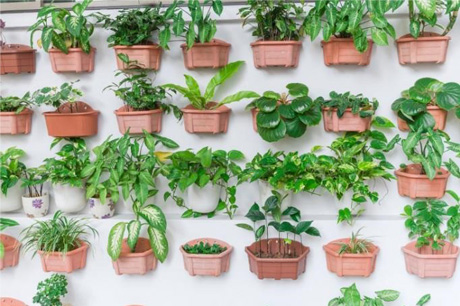Vertical Gardening at Home for Beginners
Vertical gardening has been gaining popularity lately. Besides being a planting solution that saves space, vertical gardens are a unique and highly customisable option to display your favourite plants at home.
We break down the key benefits of installing a green wall (or more!) at home, and show you how to get on this growing trend!
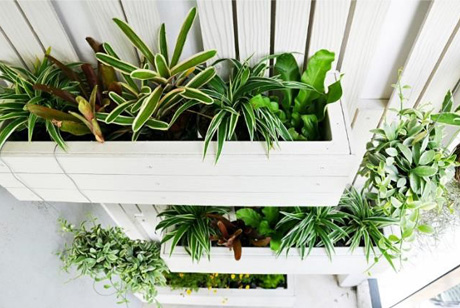
Why get a vertical garden?
Just in case you need more reasons why vertical gardening is the new greening way to go:
1. A vertical garden is a great conversation starter. Transform a plain wall with greenery that will surely impress your guests. With your vertical garden as the focal decorative showpiece in your flat, there is also no need to invest in expensive art to dress up your walls.
2. It improves the air quality in your home. Plants help to purify and clean the air in their surroundings, acting as natural air-filters and contributing to your health.
3. A vertical garden lets you grow your own food at home. Imagine the convenience of snipping the herbs you need for your pasta dish right off your home garden!
Turn it into a shared passion with your loved ones, and enjoy the fruits of your labour together!
How do I construct a vertical garden at home?
First, decide where you plan to install your new vertical garden at home. Pick a wall that will show off your green wall to maximum impact, while considering factors such as sufficient light to keep your plants healthy.
Next, choose the type of planter system that best suits the plants you wish to grow. There are various types of green wall systems on the market, but maintainability should be your primary concern.

(Photo credit:Urban Green Lab)
For ease of assembly and replacement of plants, go for a modular pot system or hanging planters. You can even DIY your own system using different materials such as steel mesh, wooden crates or rods!
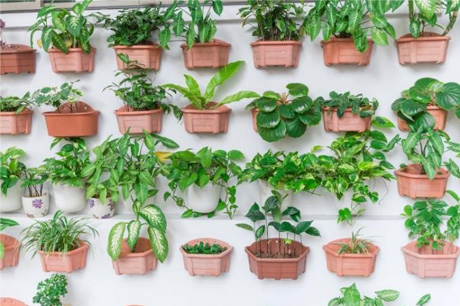
How do I maintain my vertical garden?
The same gardening rules apply for vertical gardens too! Make sure your plants receive regular watering, fertilising and pruning. Look into setting up an automated drip irrigation system for easier watering.
Soil is often not used in vertical gardens due to their weight, especially when wet. Media that are more porous such as pumice is a good alternative that enables healthy root growth with adequate drainage and aeration. While going soilless helps you avoid houseplant pests, you would need to feed your plants using water-soluble fertiliser to provide them with nutrients.
Pruning is essential for vertical gardens, to ensure that faster-growing plants do not crowd or invade the space of others. This will help prevent pest and disease problems, and ensure that your plants are evenly exposed to light.
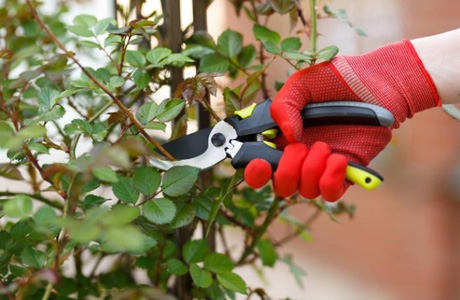
What plants can I grow in my vertical garden?
While not all plants will thrive in vertical gardens, you can still select from a wide variety of species from ferns to vines, depending on the existing environmental conditions such as sunlight.
For gardening newbies, consider perennials like the heart-leaf philodendron and pothos that are low-maintenance and hardy. Their growth pattern allows them to climb the support structure to create a lush effect.
Edible herbs such as basil and thyme can also be a practical option if you love cooking, while succulents are an ideal choice for a smaller vertical garden and can withstand less frequent watering.
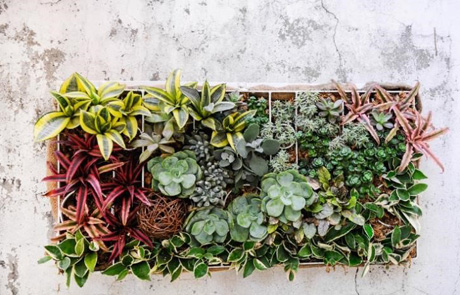
Are you cultivating your own vertical garden? Share your experience and photos with us and follow MyNiceHome for more gardening tips!
Source: mynicehome.gov.sg

